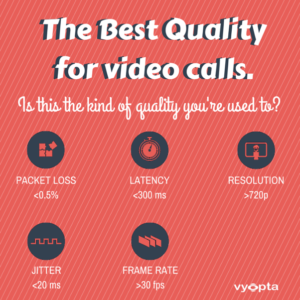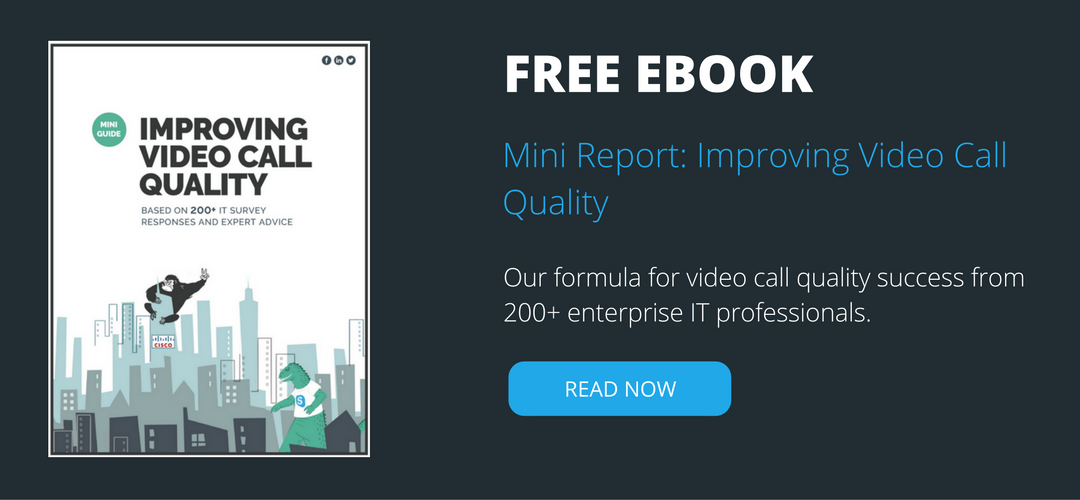The difference today is that video environments are much larger, and poor call quality has increased as video calls happen more frequently across regular networks.These are the rules to stick to, in order to improve video conferencing call quality and user experience from an IT perspective.
Rule #1: Start with the classic “identify the problem” approach.
IT managers and video administrators will tell you that call quality issues are bound to happen. In the old days of dedicated networks, a single statistic of packet loss was all you needed to diagnose poor call quality. Today, identifying low-quality calls often dependent on more call quality indicators than just packet loss because there are many paths a call can take.
Videoconferencing includes content sharing, voice and video and each one of these communication protocols has it’s own individual call quality metrics that can indicate a problem.
| Video | Audio | Content |
|
|
|
|
|
|
|
|
|
|
|
|
|
|
The real problem is that many organizations don’t have a monitoring tool that measures comprehensive video call quality metrics like shown in the table above.
Rule #2 Manage video call quality at scale.
Your video environment is growing. If it isn’t growing, it’s probably related to poor user experience (such as bad video calls).
“You can’t manage what you don’t measure.” If you can’t see what’s going on in your entire video / uc network across the organization in real time, then you will continuously lose the battle with video call quality on a reactive rather than proactive issue resolution model.
Scaling your resources to provide quality video / uc service across your organization could mean hiring more folks or outside video conferencing services help, or it could be as simple as having one single-pane-of-glass monitoring platform in real time.
Rule #3 Be proactive with alerts.
Imagine having the ability to set call quality thresholds and configure alerts to tell you when calls are bad. If we could only wave the magic wand and bring this feature to you right now, trust us – we would. What call quality metrics could you set a threshold for? Example: Current Packet Loss and Jitter
Good Packet Loss: <0.5%
Fair Packet Loss: 0.5 – 2.0%
Bad Packet Loss >2.0%
Good Jitter: <10ms
Fair Jitter: 10 – 40 ms
Bad Jitter: >40ms
These are examples taken from our new vAnalytics™ real time call quality monitoring features.
Rule #4 Avoid call outages with call quality and capacity management.
Call failures are the worst case scenario by far. They can happen for multiple reasons including busy networks, license capacity, user error etc., but video administrators today have been using a combination of features that make the ultimate shield against dropped calls. Pairing real-time capacity management with video call quality monitoring is the ultimate video quality assurance.
Manage video network capacity – MCU’s, licenses, ports etc. – in real time and for different business units across your network to help uncover issues. Historical trends give you an idea of when your peak times are in certain geographical areas and how to avoid call outages because you’ve reached capacity. Or more specifically – know how many licenses to purchase in the future.
Real time call quality will also give you a warning of how you can avoid call outages when you can see a concentrated area of bad call quality as it is usually an early indicator before the users start experiencing dropped calls.
My advice to you: arm yourself with as much call quality knowledge as you can and keep a close eye on call capacity.








